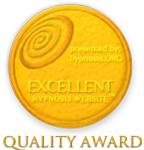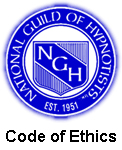
by C. Roy Hunter
Virtually all hypnosis instructors teach their students about finger response questions (called ideomotor responding). They are often used to discover the cause(s) of a client’s problem. Although around for decades, ideomotor response questions are often misapplied and used in ways that could provide false information.
For any new students of hypnosis reading this article, I’ll give a brief definition of ideomotor responding. The technique involves asking a hypnotized person questions that the subconscious can answer with finger movements. Generally these are questions that have either a “yes” answer or a “no” answer. The concept is that the subconscious is more likely to provide better answers than the conscious or analytical mind, because some clients have actually verbalized a “no” response while moving the “yes” finger.
The concept sounds simple enough, right? One finger represents a YES response, while another finger represents a NO response. How could we possibly improve on that?
The use of ideomotor response questions has actually evolved considerably during my 25+ years of experience with hypnosis. In some ways, I may have partly contributed to that evolution. There are some important reasons justifying the need for certain changes, and this article explains why those changes were necessary, and how we can facilitate ideomotor response questioning in a more client-centered way.
Since the conscious intellect can filter and/or embellish easily if a person is only in a light or medium trance depth, there is greater likelihood of accuracy when the answer comes more spontaneously from the inner mind. In fact, I have frequently seen clients answer “no” verbally while moving the “yes” finger. We still have no guarantee that total truth will always emerge, as people can lie with finger responses while under hypnosis if they really want to. (Lest anyone debate this point, I have personally done so when asked to indicate seeing something that I could visualize! I am not a good visualizer, but I don’t like to argue during hypnosis. I’d rather just move on with the trance.)
The Way We Were…
When I studied hypnosis in 1983 from the late Charles Tebbetts, he gave us a complex formula for determining which finger should be used for the YES response, and which finger should be used as the NO response. In his book, Miracles on Demand (now out of print), he reproduced a sketch of the brain that showed the two hemispheres. His theory was that left-handed people should use the right finger for the YES reply unless their handwriting was written in a certain way, and vice versa. I received a copy of that same sketch in 1983, long before his text ever went to press.
We learned other formulas taught by other hypnotists for determining which finger to choose as a YES finger, etc. Charlie convinced us to use his own formula, which I did when I first started practicing. However, out of all the teachings I learned from this grand master teacher, this was the first one that I updated. Furthermore, I made this update before his book ever went into print, and before he asked me to teach his course. In one of the first conferences I had with my mentor after I started teaching his course, I informed him of my update.
Let the Client Choose
When I first told Charlie that I ask my clients to choose the YES finger, he asked me why. My explanation can be summarized in one paragraph.
No matter what formula you use for allowing a client to determine the YES or NO finger responses, once a client has a YES response embedded into the subconscious, it may remain for a long time. If I use Charlie’s formula (or anyone else’s formula) and choose the right index finger for the YES response, what happens if another hypnotist in the past chose that finger for the NO response? The probability of accurate responses just dropped significantly.
Increasing numbers of clients have previous experience with hypnosis. Also, some who don’t believe they were hypnotized might have unknowingly entered trance in a counselor’s office and used finger responses. In light of the above, all of Charlie’s theories (and anyone else’s theories) go down the tubes if we attempt to change finger responses from whatever was previous assigned.
For the reasons explained above, I now ask my client to choose the YES finger, and to indicate that response by moving the appropriate finger. After making a note of it, I then give a second suggestion: “Please choose a different finger or thumb that represents N O [spell it out], and please indicate the negative response now.” I make a note of it. My reason for spelling “NO” rather than saying it is to avoid any possible confusion with the word “KNOW.” Now I’m ready to give a suggestion for yet another finger response.
One More Finger Response
After establishing the YES and NO response fingers, I now say: “If I ask you a question, and the answer is EITHER ‘I don’t know’ OR ‘I’m not ready to disclose,’ then please choose another finger or thumb that indicates that response, and move it now…”
There are important reasons for my establishing a third finger response. First of all, a person can lie even in deep hypnosis if there is a strong desire to conceal the truth. If we only allow the client to choose between YES or NO, the chances of inaccurate answers will increase with the intensity of subconscious resistance. Conversely, by allowing the subconscious an escape hatch for refusing to answer, we increase the probability of truth for the NO responses and the YES responses. Certainly there is no guarantee of accuracy, but I explore the YES replies first. Then, if necessary, I explore the “I don’t know” responses for possible clues to the cause(s) of a client’s problem.
Minimize the Risk of Leading
Normally, open-ended questions (who, what, when, where, why, how) are much safer than questions that can be answered with a “yes” or “no.” Asking a question that can be answered in the affirmative is often considered a leading question, especially if hypnotist expectations are projected into the client. For this reason, we must use caution.
In Chapter 6 of The Art of Hypnotherapy (Kendall/Hunt Publishing, 3rd ed., 2008), I describe what Charles Tebbetts called “The Psychodynamics of a Symptom.” He used finger response questions to ask a client about the cause(s) of a problem, going through each one of the seven psychodynamics. I do likewise, but I give my students important advice about the process.
First, it is imperative that we set up the client for ideomotor response questions in a way that prepares the subconscious for a series of questions. Sometimes I ask several questions that are totally irrelevant to the hypnosis process just to get the subconscious accustomed to the freedom of answering with either finger.
Second, in conjunction with the above recommendation, I ask questions about ALL of the psychodynamics before digressing (authority imprint, secondary gain, past experience, present unresolved issue, inner conflict, self-punishment, identification).
Third, I speak in a monotone. Several years ago, at a hypnosis convention, I witnessed a presenter using finger response questions with a volunteer. The presenter suddenly raised his voice in anticipation when asking, “Is there an ENTITY influencing you?” His expectation of a YES response was conveyed to the woman in hypnosis, whose YES finger moved afterwards. He then did an alleged entity release. When his demonstration was finished, this experienced hypnotist was too embarrassed to have lunch with her peers. She talked to me at length privately, telling me that she was certain she had no demonic influence, and couldn’t believe her YES finger had moved.
Whose opinion was correct? …the facilitator, or the person who experienced inappropriate leading?
The best professional advice I can give to any hypnotist is to avoid leading your clients into preconceived conclusions, because that is an easy way to obtain false information. This advice applies to asking finger response questions as well as employing other hypnotic techniques to gather information from the subconscious mind.
In Conclusion
In case you are reading the opening paragraphs and the conclusion of this article (without reading the middle), let me conclude with the following summary:
- Let the client choose which fingers represent which responses.
- Provide a third finger response for “I don’t know” or “I don’t wish to disclose.”
- Minimize the risk of leading: ask a series of questions, and speak in a monotone. Avoid projecting any preconceived opinions into your client while asking questions.
Once you have obtained sufficient information to begin the hypnosis process, change to open ended questions when possible. When you discover the cause(s) of your client’s problem, use appropriate techniques (within the scope of your training) to facilitate release and relearning. Remember the ultimate goal is to help your client attain his or her ideal empowerment.
Roy Hunter, M.S., FAPHP, CHI,
practices hypnosis near Seattle, in the Pacific Northwest region of the USA, and trains parts work to professionals around the world. He also works part time for the Franciscan Hospice facilitating hypnosis for terminal patients, and teaches a 9-month professional hypnosis training course based on the teachings of Charles Tebbetts. Roy is the recipient of numerous awards, including the Order of Braid (NGH) for lifetime achievement in the hypnosis profession. Roy also was awarded an honorary PhD from St. John’s University for lifetime achievement in hypnosis.





